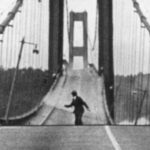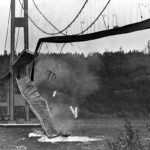I was once asked why I don’t wear a ring. “Because I’m not married,” was my response. There was a bit of a chuckle at this. If I’m honest, I hadn’t really been paying attention to the conversation leading up to the question. To qualify my laconic reply I added, “that’s the only reason I can think of for wearing a ring.” It turns out that the question had nothing to do with my marital status and everything to do with engineering rings. So just what is an engineering ring and why don’t all engineers wear one? Well hang on, because I’m about to tell you.
The origin of the engineering ring is somewhat loosely tied to the story of the Quebec Bridge, which is somewhat interesting in and of itself. The bridge took over 30 years to construct, collapsed twice during construction at a cost of 88 lives and was eventually completed in 1919. It remains to this day the longest cantilever bridge span in the world, taking the title from the equally impressive Forth Rail Bridge which was completed in 1890.

Prior to the Quebec Bridge being built, the only way to cross the St. Lawrence River between Levis and Quebec City was to take a ferry or cross an ice bridge in winter. An actual bridge span was considered as early as 1852. But the project remained at an impasse until 1887, when the government of Sir John MacDonald formally created the Quebec Bridge Company by an Act of Parliament. The company had to be revived again, due to political instability, in 1891. The period of instability was ended when Liberal Prime Minister Wilfred Laurier, MP for Quebec East, came to power and permanently reestablished the company in 1897.
In the early days of the company, Edward Hoare was the Chief Engineer. While Hoare had experience designing cantilever bridges, he had never designed one longer than 300 feet. Plans for the bridge called for a 1200 foot long main span with 500 foot cantilever arms and a 200 foot suspended span.
Oversight of the company was the responsibility of the Federal Department of Railways and Canals, then under the leadership of Collingwood Schreiber and bridge engineer R.C. Douglas. As early as 1903, Douglas knew something was up with the design. His rejection of the calculations for the Quebec Bridge led to his removal.
Schreiber requested another bridge engineer be retained for oversight of the project, but the Cabinet refused his request. He was eventually replaced by Matthew Butler and design of the bridge was in the hands of Theodore Cooper. The modern day Cooper E80 loading for railroad bridges bears his name.
As the bridge neared completion in 1907, site engineers noticed more and more distortion in key members of the truss. Preliminary calculations, completed during initial planning for the bridge, were never checked during final design. This resulted in the actual weight of the bridge being sorely underestimated – meaning the bridge could not even support its own weight.
The site engineer repeatedly wrote to Cooper about the problems. Cooper responded that the problems were minor. On August 29, 1907, the site engineer went to Cooper’s office in New York, where the two men finally came to agreement that the problem was serious. Cooper telegraphed the site to add no more load to the bridge. That telegraph didn’t arrive in time. Near the end of the work day, the south arm and central section of the bridge collapsed into the river, killing 75 people. It remains the worst bridge construction disaster in history.
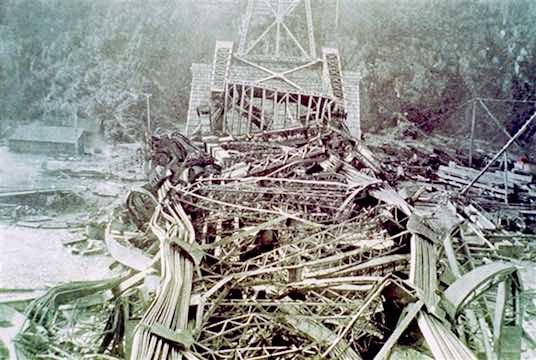
A Royal Commission was appointed, which included three engineers in good standing. Their report was issued and had 15 conclusions, including work done by a consulting engineer requested by Schreiber nearly 4 years earlier. The report laid the blame for the disaster on Cooper and his Chief Design Engineer Peter Szlapka. The company had failed to appoint an experienced engineer to oversee design and construction, leading to loose and inefficient supervision of the bridge work. Both men escaped criminal sanction.
After the inquiry, three new engineers were appointed to lead the project. The new bridge design would feature an even more impressive 1800 foot long main span, 580 foot cantilever arms and a 640 foot suspended span. Nearly eight years of uneventful construction followed before tragedy struck again.
On September 11, 1916, a faulty casting in the erection equipment used to lift the suspended span into its final position 150 feet above the river failed, causing 5,000 tons of steel to come crashing down on the workers below. The accident killed 13 workers and was initially feared to be the work of German saboteurs due to the ongoing First World War. Wartime shortages of steel required special permission in order to complete the bridge. After its completion in 1917, armed guards protected the bridge until the war’s end. The bridge was formally opened to the public on December 3, 1919.
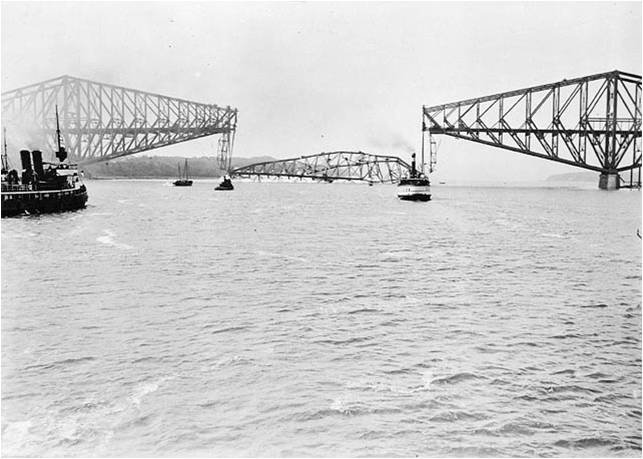
So what does this have to do with engineering rings?
The Quebec Bridge showed the power that an engineer can have in a project that is improperly supervised. This led to the creation of many institutions related to engineering that we know of today. In Canada, Professional Engineers (P.Eng.) must belong to one of these organizations. One of the first was formed by John Galbraith, one of the three commissioners to look into the 1907 collapse. The provinces of Canada regulate these organizations and membership usually involves an ethical test, character witnesses and at least four years of experience under another professional engineer.
In 1922, mining engineer professor H.E.T Haultain of the University of Toronto proposed that engineers should take an ethical oath, much like the Hippocratic Oath taken by doctors. Haultain began organizing the body which would administer the oath between 1922 and 1925, leading to the creation of the Corporation of the Seven Wardens, in honor of the first seven presidents of the Canadian Society of Civil Engineers.
Rudyard Kipling would write the text of the oath, known as “the Calling.” The first Ritual of the Calling of an Engineer was held on April 25, 1925 in Montreal with another occurring on May 1, 1925 in Toronto. Here the tradition of conferring rings on the engineers taking the oath was first formalized. The rings are made of iron, after a phrase in the oath. This led to the long held belief that the first batch of rings were made from the 1907 steel wreckage of the Quebec Bridge – a time lapse of 18 years, notwithstanding. The actual rings were made by World War I veterans in Toronto.
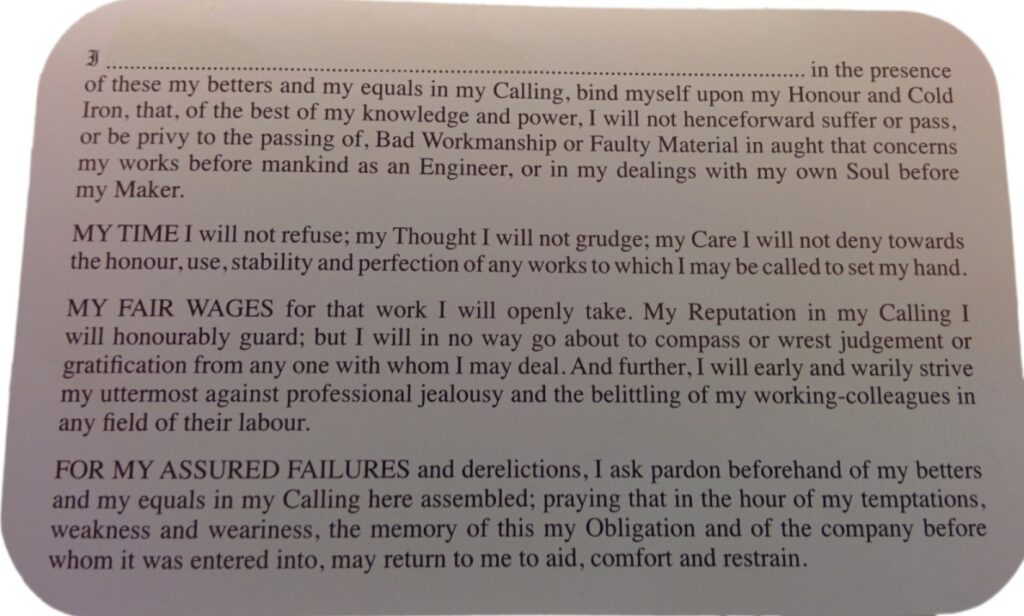
Although the Wardens originally considered expanding the ritual to the United States, the ritual remains a Canadian-only engineering tradition. The Iron Ring is intended to be worn on the little finger of the dominant hand, as a reminder to the engineer. Twelve semi-circular facets are engraved at the top and bottom of the ring, each row being offset by 15 degrees. These facets often drag on paper while the engineer is working, further reminding the engineer of his or her obligation. Iron has fallen out of favor due to its natural tendency to deteriorate and become loose. However, some areas give the recipient a choice between stainless steel and iron.
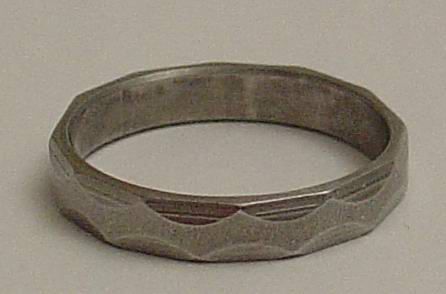
Not to be outdone, the United States has a similar organization known as the Order of the Engineer, founded in 1970. Here the recipients are given stainless steel rings which are smooth and are required to sign the Obligation of the Engineer. The first ceremony was held on June 4, 1970 at Cleveland State University.
So why don’t all engineers wear a ring? According to the Order’s website, not all universities in the US have a chapter. This is certainly true for the University of Washington – the Bothell campus has one but not the Seattle campus? And the US ring just isn’t as nifty looking.
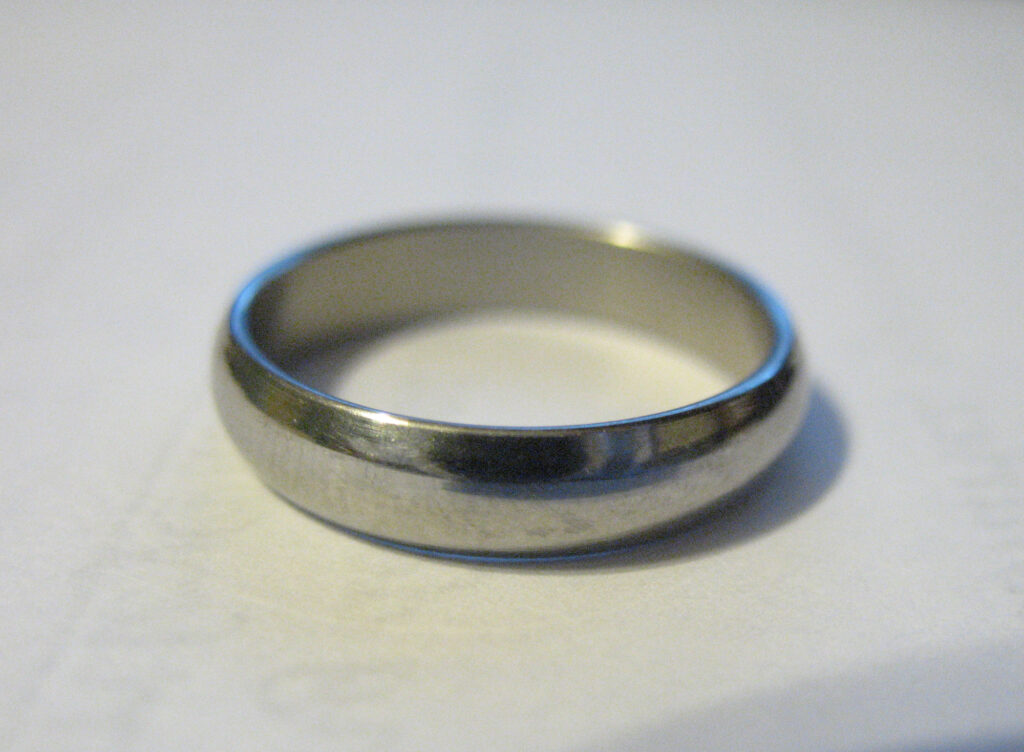
“A doctor can only harm one patient at a time. But an engineer has the capability of harming many with a single error.” – Unknown
Views: 1700
